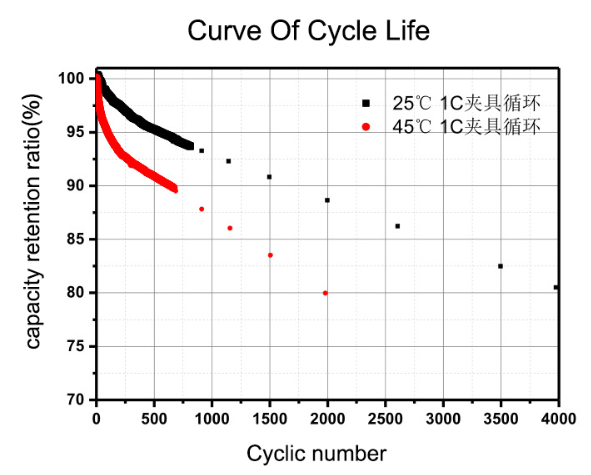The cycle life of a LiFePO4 battery is governed by a combination of physical and chemical reactions. Several factors impact its longevity:
Charging and Discharging
It is crucial to use a charger equipped with a proper cutoff mechanism to prevent overcharging, which can reduce the lifespan of a lithium iron phosphate battery. Generally, slower charging rates are preferable as they help extend battery life.
Discharge Depth
The depth of discharge significantly influences the longevity of LiFePO4 batteries. A lower depth of discharge can greatly enhance the battery's lifespan, while deeper discharges can shorten it. Avoiding full discharges to very low voltages is advisable.
Temperature Conditions
High operational temperatures can degrade the electrode activity of LiFePO4 batteries, shortening their lifespan. Maintaining a moderate operating temperature is beneficial for prolonging battery life.

Under typical conditions, LiFePO4 batteries have a cycle life exceeding 2,000 cycles. However, this varies based on usage intensity:
Stable High C-rate Discharge: Primarily used in power applications, such as motor power supply, where high-load conditions are common, the cycle life can be around 800 cycles.
Unstable High C-rate Discharge: More erratic usage can drastically reduce the lifespan, typically to about 300 cycles.
High temperatures pose challenges to LiFePO4 battery performance:
Low Current Operations: If quality-controlled and from reputable manufacturers, batteries can achieve over 1,000 cycles. However, lesser-quality batteries might only endure around 500 cycles.
Stable High C-rate Discharge: Under continuous high-load conditions, even high-quality batteries may not exceed 500 cycles due to accelerated material decay.
Unstable High C-rate Discharge: Frequent unstable conditions can further reduce the lifespan, with batteries becoming unusable after 250 to 300 cycles.
Cold temperatures have a more severe effect than high temperatures, potentially reducing the cycle life to as few as 300 cycles due to operational limitations in extreme cold.
The life and performance of LiFePO4 batteries can be assessed through various tests, such as:
Charge and Discharge Cycle Test: Simulates normal usage to evaluate battery stability over multiple cycles.
Capacity Fading Test: Tracks the battery’s ability to retain charge over time.
Temperature Performance Test: Assesses battery functionality under varying temperatures.
Internal Resistance Test: Evaluates performance impact due to internal resistance changes.
Safety Performance Testing: Ensures stability and safety under abnormal conditions.
To maximize the life of LiFePO4 batteries, consider the following practices:
Minimize Deep Discharges: Keep the State of Charge between 20% and 80%.
Adopt Optimal Charging Practices: Avoid charging to full capacity frequently and use a quality charger designed for LiFePO4 batteries.
Manage Temperature Effectively: Operate and store the battery within recommended temperature ranges.
Control Discharge Rates: Limit the discharge rate to recommended levels and employ a quality Battery Management System (BMS) to monitor battery conditions.
Implement Proper Storage Practices: Store batteries at a partial charge state and avoid long periods of inactivity.
Ensure Cell Balance: Utilize BMS with cell balancing features and occasionally run equalization processes.
Utilize Appropriate Tools: Regularly monitor battery parameters through BMS and maintain logs for tracking battery health.
Limit High Power Demands: Avoid or adequately manage high-drain applications to prevent accelerated wear.
These guidelines help maintain the efficacy and extend the cycle life of LiFePO4 battery (lithium iron phosphate battery), making them a reliable choice for various applications.
Next:18650 Battery vs. 21700 Battery: A Comprehensive Comparison
Previous:CATL Unveils Freevoy Super Hybrid Battery, Over 400km Range with 4C Fast Charging Capability
Contact Person: Miss. Elsa Liu
| WhatsApp : | +8617763274209 |
|---|---|
| Skype : | +8617763274209 |
| WeChat : | 17763274209 |
| Email : | Elsa@lifepo4-battery.com |